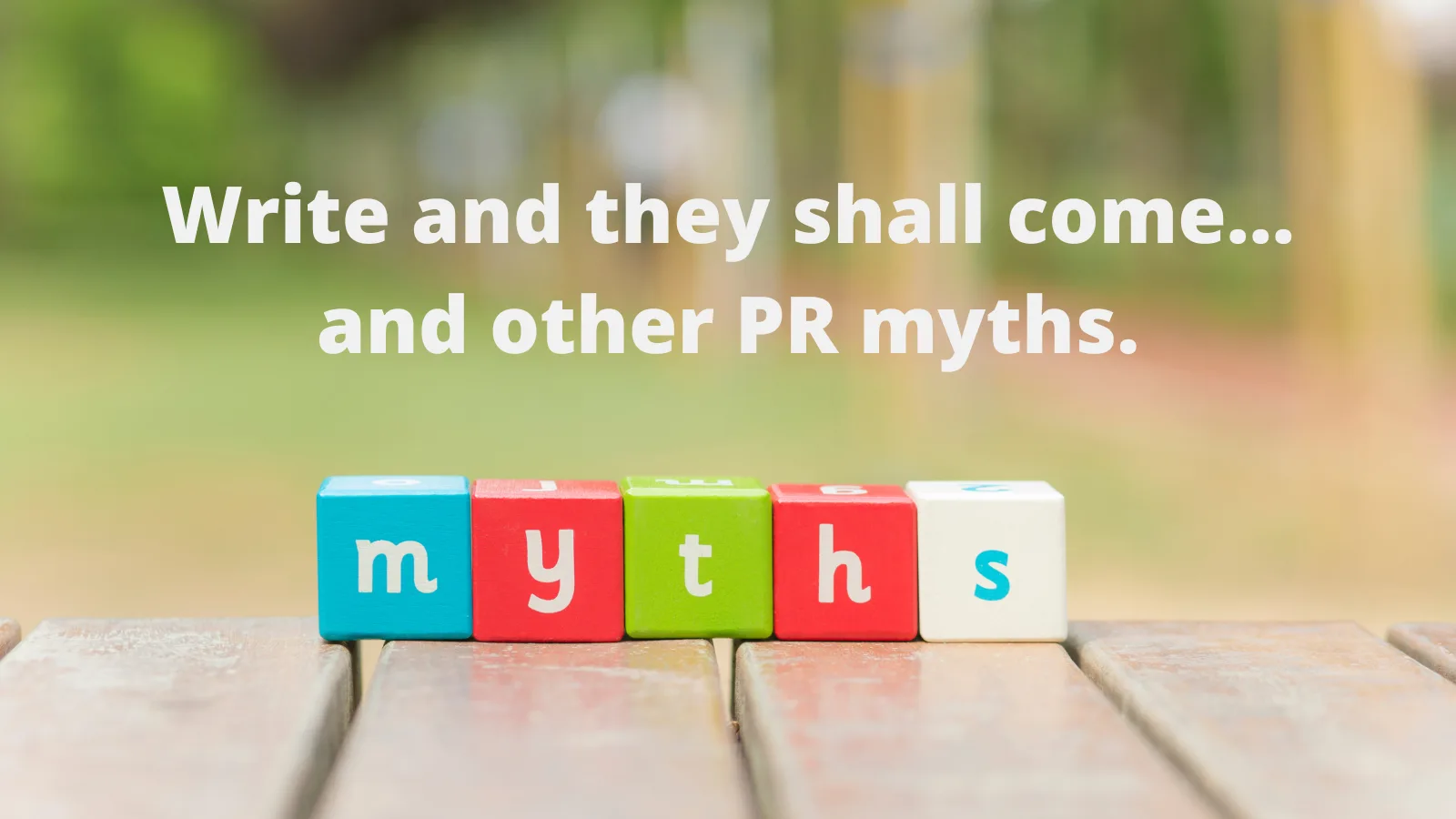Take a look at some of the most common myths surrounding PR. Some of these myths were once truisms but as the media evolves to reflect the changing state of our world, so do the ground rules for media relations.
Write and They Shall Come
Myth #1: News releases generate coverage and if I simply write a good news release and issue it over the wire, the press will follow. Unfortunately this just isn’t so in today’s media environment. The news release has value in establishing a company on record for a particular event and will likely be picked up on many news aggregation sites. As to media coverage, this is something that must be addressed through targeted contact with a pitch as to why the news is important to that editor’s audience. Journalists have little time to monitor the wire service looking for news and rely upon PR professionals to call their attention to items of relevance and importance.
Myth #2: Breakthrough product news garners big coverage. It is well known in the circles of marketing folks that the better, faster mousetrap is not always the winner in the marketplace. The same holds true in the market for media coverage. Speeds and feeds need to be in the context of problems solved with a view to their impact on the overall industry or business sector. Better yet, such news needs to be delivered from the view of the customer with supporting commentary on how this breakthrough has solved a problem, increased productivity or provided value.
Rid Yourself of False Security
Myth #3: Off the record means I can speak freely. Many astute executives have made the mistake of sharing information with a reporter under the false sense of security of three little words, “off the record.” This verbal pact that is made by one cannot be adhered to by a journalist whose job is to get the story and run with it. Although many a reporter have the best of intentions, it just isn’t something they can agree to so it is best to abide by the simple rule to only say what you would feel comfortable having in print.
Myth #4:Embargoes are the preferred method for reporters to get a story early. Not necessarily. Unfortunately, the practice of embargoes, where a media outlet is provided information under the condition that they cannot publish this information until a certain date, has been overused and misused. This has led discerning journalists to question the veracity of embargoed information. In an age of 24/7 communications, embargoes that require a reporter to sit on a story doesn’t mesh with today’s outlets. Some view embargoes as a means for PR folks to manipulate the news and exert too much control. The best use of embargoes is sparingly and with solid knowledge on the style and preferences of the journalist.
Forget Borrowed Interest
Myth #5: Publicity stunts can land my company big headlines. Actually, publicity stunts are the content of circuses not good business PR. At best, the stunt may gain ink but your company gets lost in the story because there isn’t any relevance. Good business PR is predicated on meaningful communications which is built on the fundamentals of education, perspective and information.
Myth #6: Any PR is good PR. Not so. Although you can’t control everything that a reporter may write about your company, careless or reckless interactions with the media can be very detrimental. Always approach the media with knowledge of the publication’s mission and the audience they reach and the values of that audience. Responsible PR professionals take time to learn about the specific background of the journalist along with developing a good, well thought-out story. Once in print or on the air — you can’t take back negative coverage.

